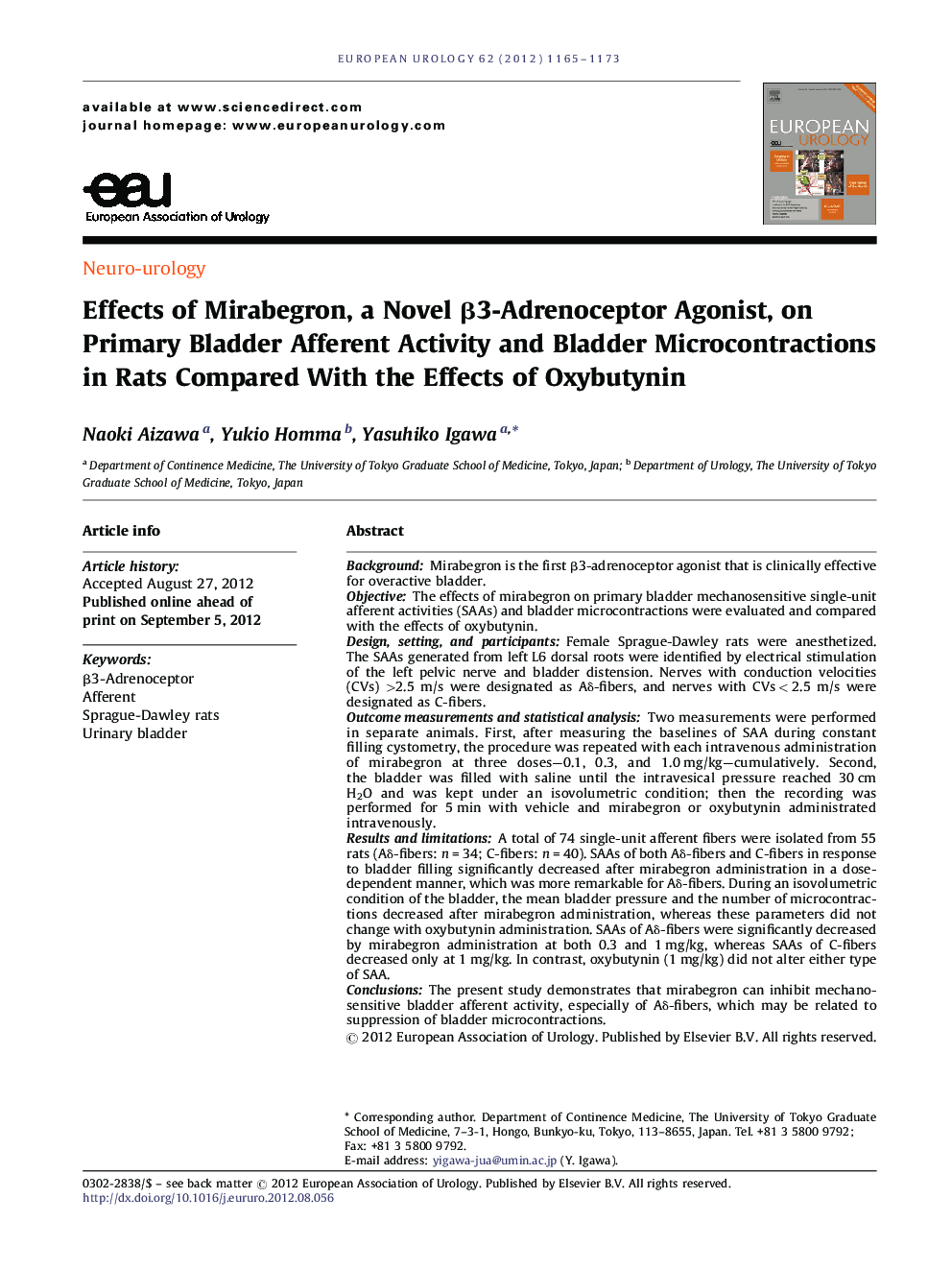| Article ID | Journal | Published Year | Pages | File Type |
|---|---|---|---|---|
| 3922749 | European Urology | 2012 | 9 Pages |
BackgroundMirabegron is the first β3-adrenoceptor agonist that is clinically effective for overactive bladder.ObjectiveThe effects of mirabegron on primary bladder mechanosensitive single-unit afferent activities (SAAs) and bladder microcontractions were evaluated and compared with the effects of oxybutynin.Design, setting, and participantsFemale Sprague-Dawley rats were anesthetized. The SAAs generated from left L6 dorsal roots were identified by electrical stimulation of the left pelvic nerve and bladder distension. Nerves with conduction velocities (CVs) >2.5 m/s were designated as Aδ-fibers, and nerves with CVs < 2.5 m/s were designated as C-fibers.Outcome measurements and statistical analysisTwo measurements were performed in separate animals. First, after measuring the baselines of SAA during constant filling cystometry, the procedure was repeated with each intravenous administration of mirabegron at three doses—0.1, 0.3, and 1.0 mg/kg—cumulatively. Second, the bladder was filled with saline until the intravesical pressure reached 30 cm H2O and was kept under an isovolumetric condition; then the recording was performed for 5 min with vehicle and mirabegron or oxybutynin administrated intravenously.Results and limitationsA total of 74 single-unit afferent fibers were isolated from 55 rats (Aδ-fibers: n = 34; C-fibers: n = 40). SAAs of both Aδ-fibers and C-fibers in response to bladder filling significantly decreased after mirabegron administration in a dose-dependent manner, which was more remarkable for Aδ-fibers. During an isovolumetric condition of the bladder, the mean bladder pressure and the number of microcontractions decreased after mirabegron administration, whereas these parameters did not change with oxybutynin administration. SAAs of Aδ-fibers were significantly decreased by mirabegron administration at both 0.3 and 1 mg/kg, whereas SAAs of C-fibers decreased only at 1 mg/kg. In contrast, oxybutynin (1 mg/kg) did not alter either type of SAA.ConclusionsThe present study demonstrates that mirabegron can inhibit mechanosensitive bladder afferent activity, especially of Aδ-fibers, which may be related to suppression of bladder microcontractions.
